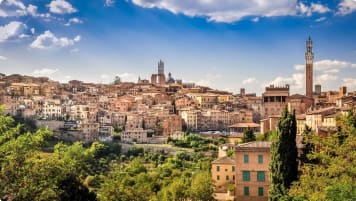Who were the Roman Emperors? The Definitive Guide for Travellers
Who led Rome? From the 8th century BC, Ancient Rome grew from a tiny town on the Tiber River in modern-day Italy to a sprawling empire, that spanned across most of continental Europe, Britain, a…
9 Oct 19 · 10 mins read
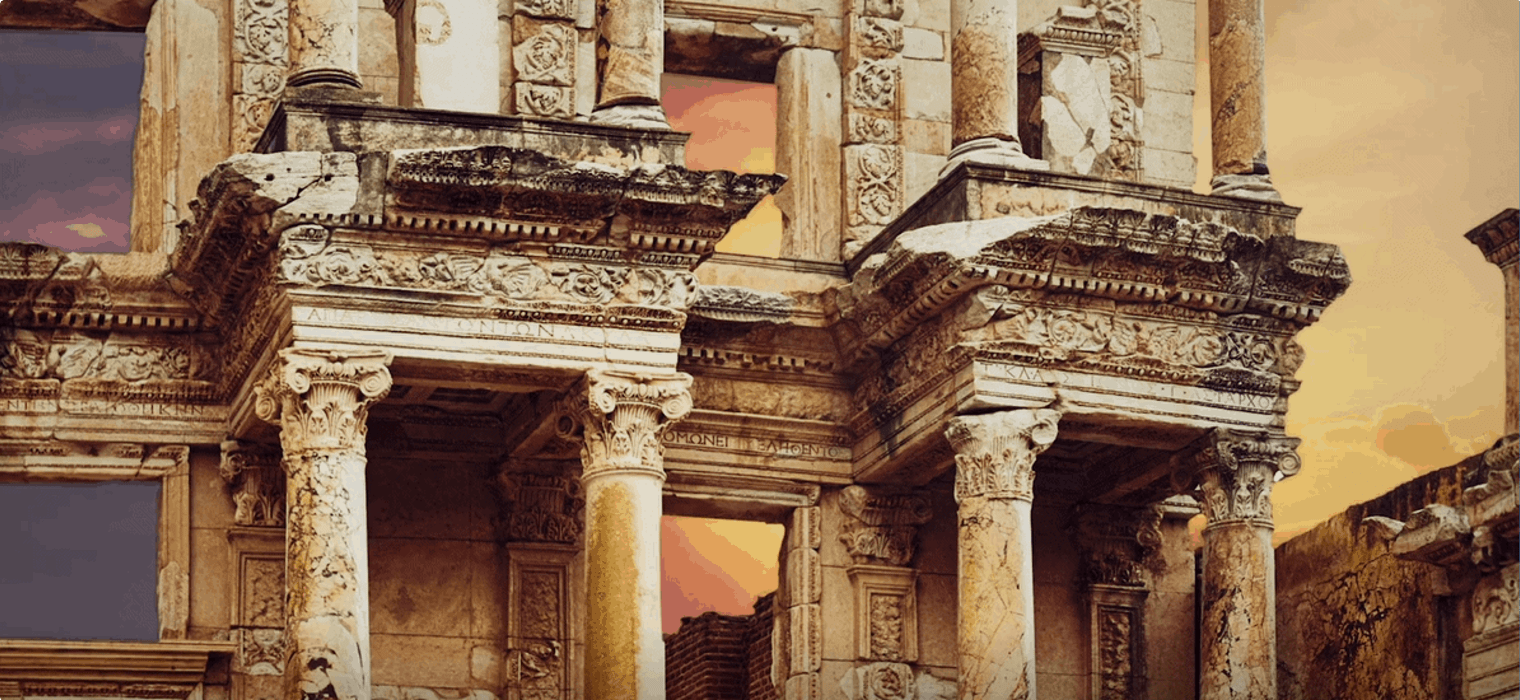
Who led Rome?
From the 8th century BC, Ancient Rome grew from a tiny town on the Tiber River in modern-day Italy to a sprawling empire, that spanned across most of continental Europe, Britain, a large portion of western Asia, northern Africa and the Mediterranean islands. Let us learn some more about the protagonists in this story and the emperors that saw this civilisation prosper. While some of them are very well known, others are less so. Some ascended to leadership via lineage and others forced their way to power. What they all have in common is that they left a mark on Roman history and made lasting impressions on the world as we know it. This article will intend to give a brief profile of key Roman emperors, how they got to power and what legacy they left on the Ancient Roman Empire. Before reading, find additional context in our article on The Rise and Fall of the Roman Empire.
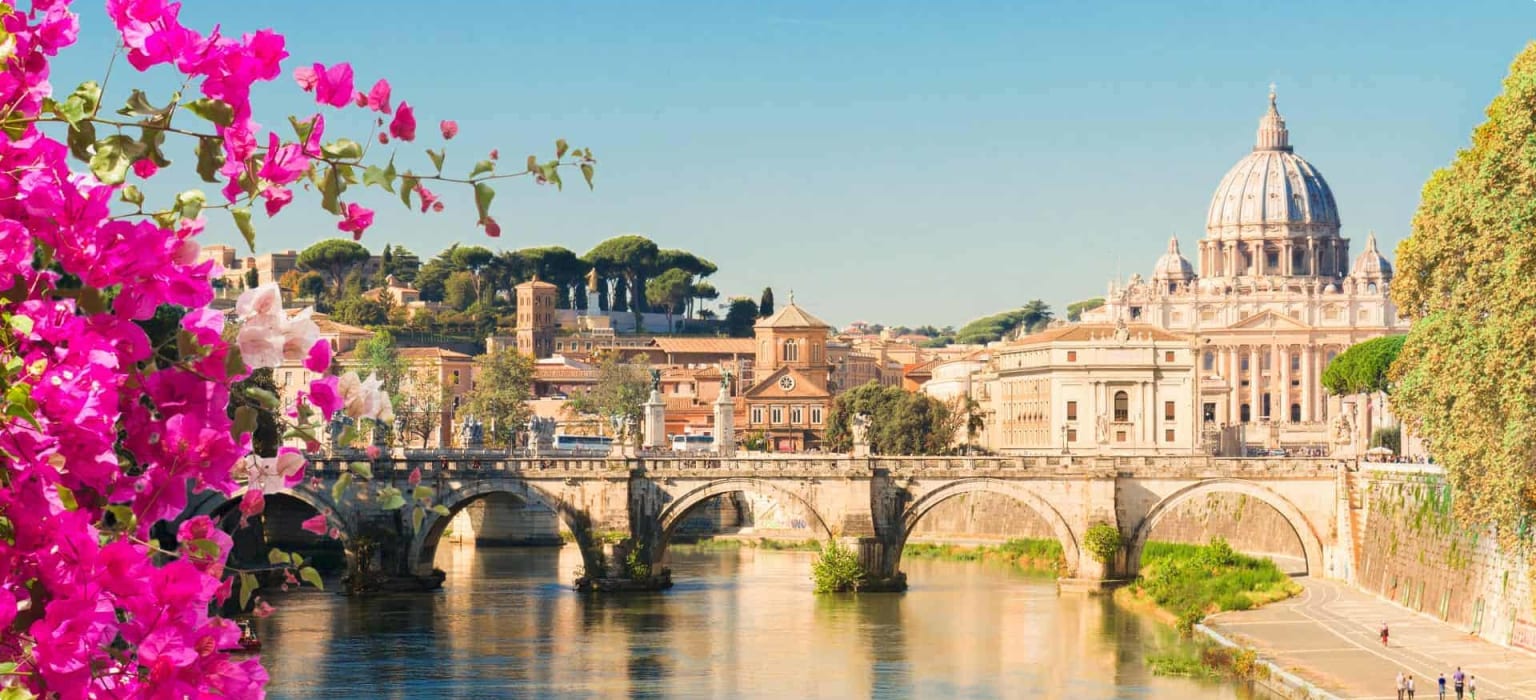
The First Roman Emperor: Augustus (27 BC to 14 AD)
Augustus Caesar is the name given to the first, and many argue, the greatest Roman Emperor. Augustus was born Gaius Octavius Thurinus in 63 BCE and was adopted by Julius Caesar, his great-uncle. Throughout his life he was known by many different names, such as Octavius, Octavian and Augustus. When Julius Caesar was assassinated on the Ides of March in 44 BC, Octavian was named as his heir. Octavian allied himself with Caesar’s close friend and relative, Mark Anthony, and Marcus Aemilus Lepidus. Together, the three formed the Second Triumvirate, dividing up Roman territories between each other. However, as time went on, relations between Octavian and Anthony began to sour. This was in part due to Anthony’s sustained affair with Cleopatra, Queen of Egypt, in spite of his marriage to Octavian’s sister, Octavia. Octavian and Anthony feuded at the Battle of Actium in 31 BC where Antony and Cleopatra were defeated, eventually committing suicide. Octavian then had Caesar deified, thereby proclaiming himself as the a son of god and naming himself Augustus Caesar. His victory saw the end of the Roman Republic and the beginning of the Roman Empire with Augustus as the undisputed leader.
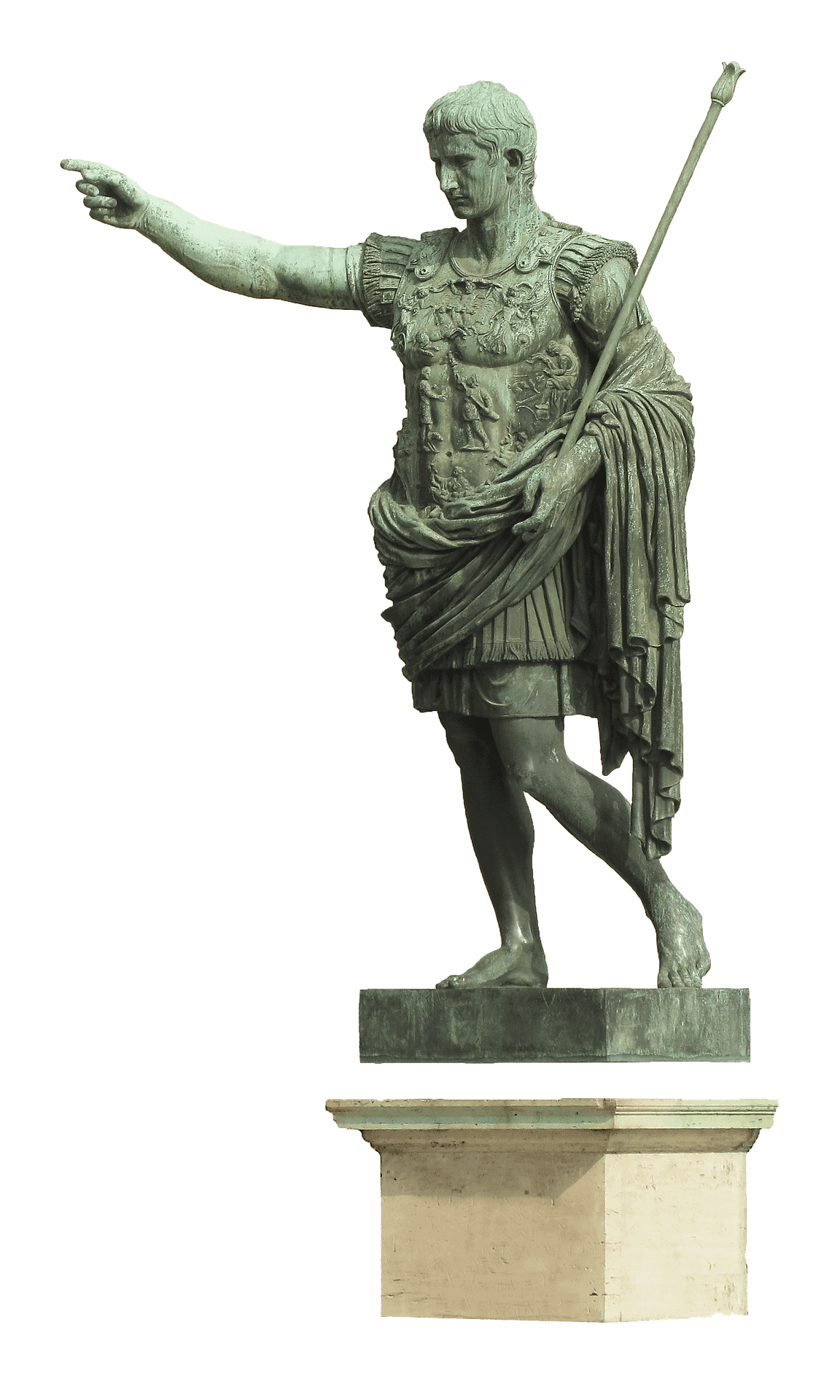
Throughout his 41 years as emperor, Augustus made vast changes to the government structure and underwent a number of public works in Rome. He reduced the Senate to 600 elite men from around the empire (Spawforth 2018, p. 257), excluding the previously represented plebians. He championed the distinguishing between citizens and non-citizens, by making clear the status, rights and duties of citizens (Norwich University Online 2017). He made legal reforms in favour of increasing the population, such as incentives for large families and penalties for not having children (Mark 2018). He also renewed the tax system in order to pay for a multitude of new buildings and roads, welfare and retirement plans, as well as emergency services.
Augustus added new territories in Europe and Asia Minor to the empire and secured alliances that meant he effectively ruled from Britain to India. He created the Pax Romana, restoring peace to the empire, and allowing the economy, the arts and commerce to flourish. Augustus was particularly interested in the arts and was a personal patron of many artists.
I found Rome of clay and leave her to you of marble. – Augustus Caesar
When visiting Rome, you will be hard pressed to spend a day without seeing the influence of Augustus. Some highlights are the Mausoleum of Augustus, a number obelisks, and especially the Pantheon which began in Augustus’ time and was completed in Hadrian’s. The Mausoleum of Augustus, which was neglected for many years, has been restored and reopened to visitors. The Mausoleum is the final resting place of many emperors including Tiberius, Claudius and the tyrannical Caligula. Augustus’ influence can be felt in many of the wonders of Roman times but an essential stop on a visit to Rome is Casa di Augusto, Augustus’ private residence that he shared with his wife Livia.
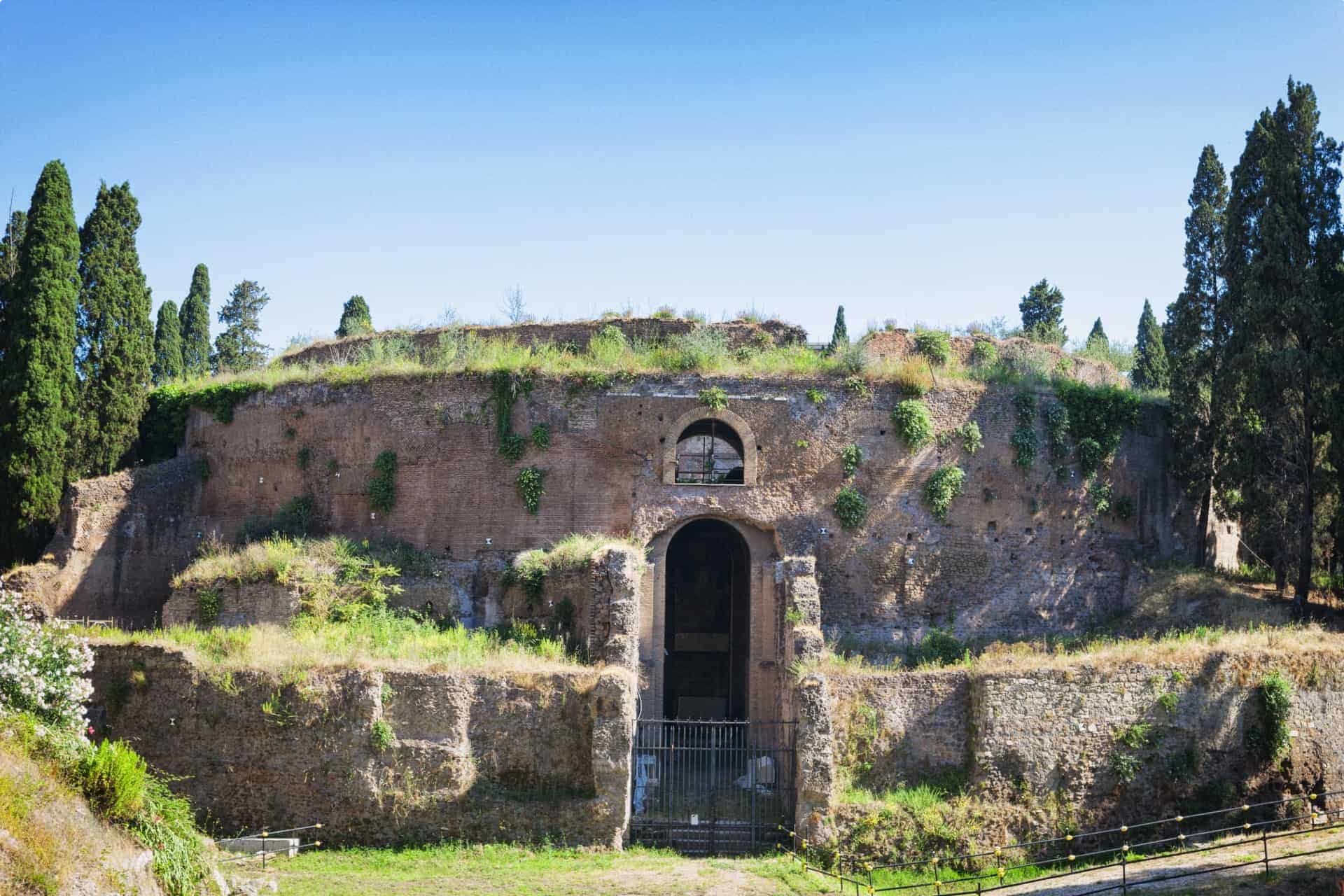
Augustus passed many sweeping reforms before his death in 14 AD and was succeeded by Tiberius, his stepson who he had adopted in 4 BCE.
Bloody, Brutal Rule
Tiberius (14 to 37 AD)
Tiberius was adopted by Augustus Caesar. However, Tiberius was not Augustus’ first pick as successor but Augustus’ grandsons, who were expected to ascend to the throne, both died before Augustus. Despite not being the preferred heir, Tiberius had enjoyed a brilliant and successful military career before becoming Emperor, and had made many sacrifices at Augustus’ request, including divorcing his much-loved wife Vipsania to marry Augustus’ unfaithful daughter, Julia.
Tiberius did not share Augustus’ political skill and he became increasingly unpopular with the Senate. He quickly became a suspicious and paranoid emperor, prosecuting anybody he sensed was against him. His reign plunged the empire into an era of political purges, exiles, murders and terror. According to Tacitus and Suetonius, Roman historians, the penalty for treason against Tiberius was be pushed off a cliff (Lang 2018). This immense paranoia led to self-imposed exile on the island of Capri, where he remained until he died.
Caligula (37 to 41 AD)
According to Donald Wasson, Emperor Caligula was hailed as a ‘monster’ by historian Suetonius (2011) and is known for leading a four-year reign of excess and carnage. With Augustan lineage and under the forced tutelage of Emperor Tiberius, Caligula was deemed a rightful heir to the imperial throne. For a brief time, he shared the throne with Gemellus, Tiberius’ son; however, Gemellus died soon after in suspicious circumstances. Despite this questionable start, his rule began with the full support of Roman citizens because he reversed Tiberius’ strict treason laws as well as fixing temples and constructing works of aqueducts, lighthouses, and amphitheatres. But, this productive and admired persona dramatically shifted six months later after a medical emergency (Wasson 2011). His brush with death allowed for paranoia to set in, and he became hostile to the Senate and the people. He re-instituted treason trials, took pleasure in torture, ostracized Jewish citizens, and shamed the Senate, famously claiming that he could make anyone consul, including his horse (Lang 2018). His biographer Suetonius quotes him as often saying ‘Remember that I have the right to do anything to anybody’ and it seems he did just this. His treatment of others led to him being the first Roman Emperor to be assassinated in 41 AD by the Praetorian Guard.
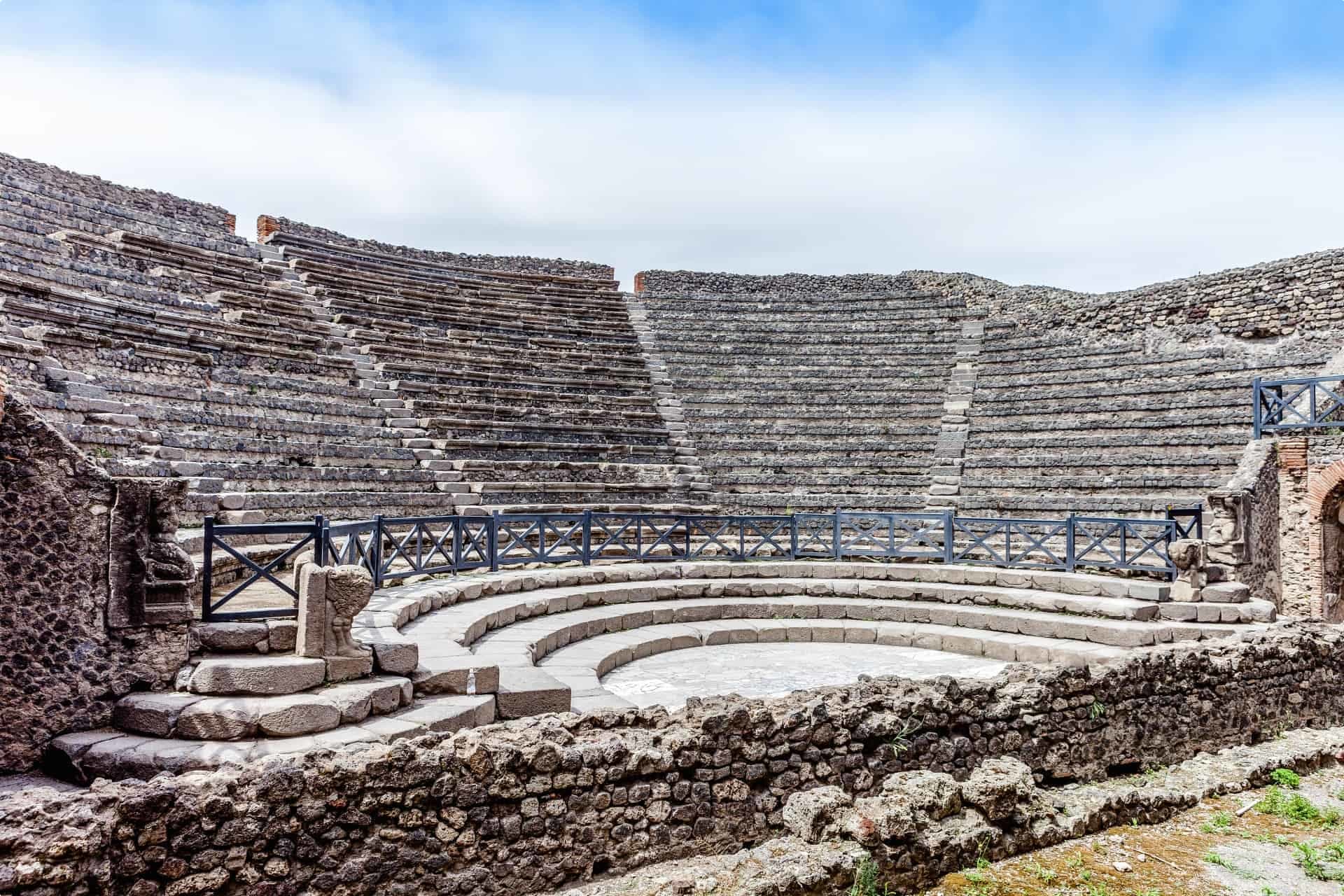
Nero (54 to 68 AD)
Nero was born Lucius Domitius Ahenobarbus in 37 AD, but adopted the name Nero Claudius Caesar Augustus when he became the stepson of Emperor Claudius in 49 AD (Wasson 2012). There are suspicions that Nero poisoned his step-father using poisonous mushrooms, and Nero, upon assuming the throne, expressed his dislike of the way Claudius managed the Empire. He was also meant to co-lead with his brother Britannicus, but he was murdered, undoubtedly by Nero. He used entertainment, such as games, concerts, races, and gladiators, to subdue his citizens. But, this was also a means of personal gain as he had a forced audience for his greatest pleasure in life: singing and lyre playing, in both of which he lacked talent (Wasson 2012). With time, the population grew to hate Nero, due to his cruelty toward Christians and his expensive taste and extravagant lifestyle, as exhibited by the construction of the Domus Aurea, or golden house, in central Rome (Lang 2018). In order to construct the Domus Aurea, complete with gold-plated ceilings, a lake and exotic animals, he had to raise taxes for the funds (Wasson 2012). In addition to draining the treasury, ineffective response to the great fire of 63 AD led to his impeachment as Emperor and his suicide.
Domitian (81 to 96 AD)
Domitian, born 51 AD, was the son of Vespasian, who became Roman Emperor in the year following Nero’s fall. He was not a military man and thus was nervous at the prospect of being overthrown or assassinated. His initial response to to these fears was to distract his potential foes with entertainment including chariot races and gladiators, often held in the world-famous Roman Colosseum, which was built by his father. Domitian also provided for citizens’ welfare. However, the expenses to be liked weighed down on the Emperor as a financial burden, which led to his high taxation and fortune seizures of wealthy senators. He forcefully took more money and paid for more games, festivals, and even personal security. He also increased treason charges and executions. However, he met his demise by an assassination orchestrated by his wife in 96 AD. This event was rumoured to be celebrated by the senate and citizens alike.

The Five Good Emperors
The ‘golden era’ of the Roman empire fell under the watchful eye of five key emperors. It was Nerva, Trajan, Hadrian, Antonius Pius, and Marcus Aurelius who consolidated the Roman Empire at its height of expansion, and imposed a unified language and civil society in all of its territory. The emperors succeeded in implementing the foundations for modern democracy by enforcing a legal system and tax reforms, providing welfare for citizens, and building infrastructure for the people.
Nerva (96 to 98 AD)
After Domitian’s assassination, the next successor was unclear because he had no heirs. His brutal reign alienated most of the Senate, which inspired the need for a replacement who was a stark contrast to Domitian. Nerva was only put in power as a temporary place holder while a more suitable leader was decided. He was on the verge of exile under Domitian’s reign for his opposition to the totalitarian governing style. Nerva was put forward due to his esteemed family lineage and career in imperial positions. In his two years in power, he reversed many of Domitian’s laws and returned goods to senators that Domitian had stolen from. Nerva had a stabilizing effect on the Empire because he incorporated the Senate in every policy decision. In is short time in power, he also reduced spending and better invested resources into public works. Before passing away 28 January 98 AD, Nerva adopted Trajan as his son so that he would succeed him. This was the most lasting impact he would have on the Empire as Trajan became the crux of the Roman golden age.
Trajan (98 to 117 AD)
Trajan was born 53 AD to a legacy of military greatness. Following his biological father’s footsteps, he set off to battle from a young age and served under Domitian’s army. Despite tensions between the senate and the military over the assassination of Domitian, Trajan remained well-liked by both sides and bridged the gap between them. He is best known for his military accomplishments as Emperor, including expanding the Empire to its height, including the gold-rich lands in Dacia (Romania), Arabia and Mesopotamia, but he was also a worthy emperor in terms of his welfare to his citizens. He freed prisoners, supported poor children, and repaired and built more roads, bridges, and institutions than most other emperors. Moreover, he had the greatest population of citizens to care for, nearly 1 million at the time. To appease these citizens, Trajan constructed a central hub where all of the administrative, market and religious centres could be and where all the citizens could mingle and trade.
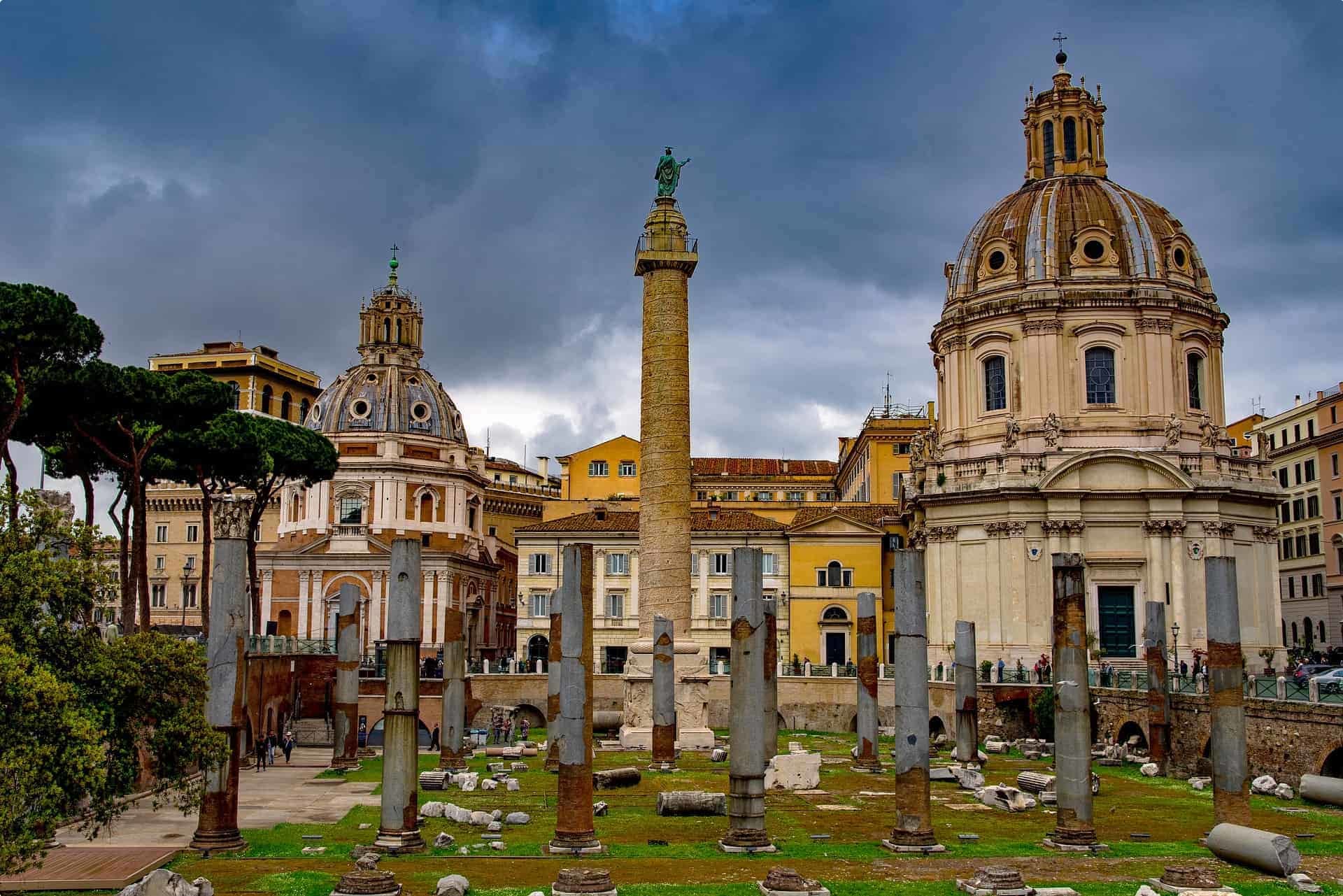
Hadrian (117 to 138 AD)
Hadrian was born in now-Seville, the same area as Trajan, a factor that may have contributed to his adoption to be come successor to the imperial throne. The name may sound familiar because of Hadrian’s Wall, which demonstrate’s Hadrian’s main tenant. Unlike his adoptive father, Trajan, Hadrian’s focus was not on expanding the Roman Empire, but protecting the existing territory. At the time of its construction, the Hadrian Wall was the Roman Empire’s northernmost border. His time of rule was one of widespread peace and he was well loved by most of the Empire. This is most likely because he spent over half of his time as ruler, travelling to all territories of the Empire, meeting its citizens and directly overseeing its administration and construction. Hadrian was a man of the people. His lasting designs in Roman architecture include the still-standing Pantheon and his villa at Trivoli. His legacy is even immortalised by the Arch of Hadrian in Athens. Hadrian died of natural causes in 138 AD, before which he named the two successors that should follow him: Antonius Pius and Marcus Aurelius.
Antonius Pius (138 to 161 AD)
Despite not being Hadrian’s first choice, as he wanted Marcus Aurelius to ascend the throne but thought him too young to do so, Antonius still proved himself to be a strong leader and a champion for peace throughout the Empire. According to Donald Wasson, his biographer described him as having a calm and kind temperament (2013). He continued following the legislation that Hadrian had set out, but added his own influence on ensuring that the law be fair and equal to citizens of the entire Empire. He instilled the first instance of “natural law” (Norwich University) and grew trade and economic reform, bringing in prosperity for all citizens. Antonius Pius performed his role well and created a stable land of peace. He also kept his promise to Hadrian and safeguarded the throne for Marcus Aurelius to succeed him upon his death.
Marcus Aurelius (161 to 180 AD)
Marcus Aurelius was nicknamed the ‘philosopher emperor’ (Ricketts 2018) because of his impressive intellect and his twenty years as a just and equal ruler. Marcus was so utterly different from the pre-golden era, brutal rulers who succumbed to fear that he, in fact, advocated for free speech and welcomed criticism. He is one of the most highly referenced writers on stoicism and maintained composure in responding to crises that arose. His stoic nature and brilliant mind lent themselves well to competent administration that reverberated throughout the Empire. His important accomplishments for the empire were his support of the arts and education among the citizenry, economic reform, including the introduction of new currency, his fair adjudication of court cases, and welfare provisions to all citizens. He was a well-rounded Emperor that also effectively commanded the army to protect its borders from Germanic and Quadi attacks. His leadership made a lasting impression on the Empire and increased profitability and happiness throughout his reign.
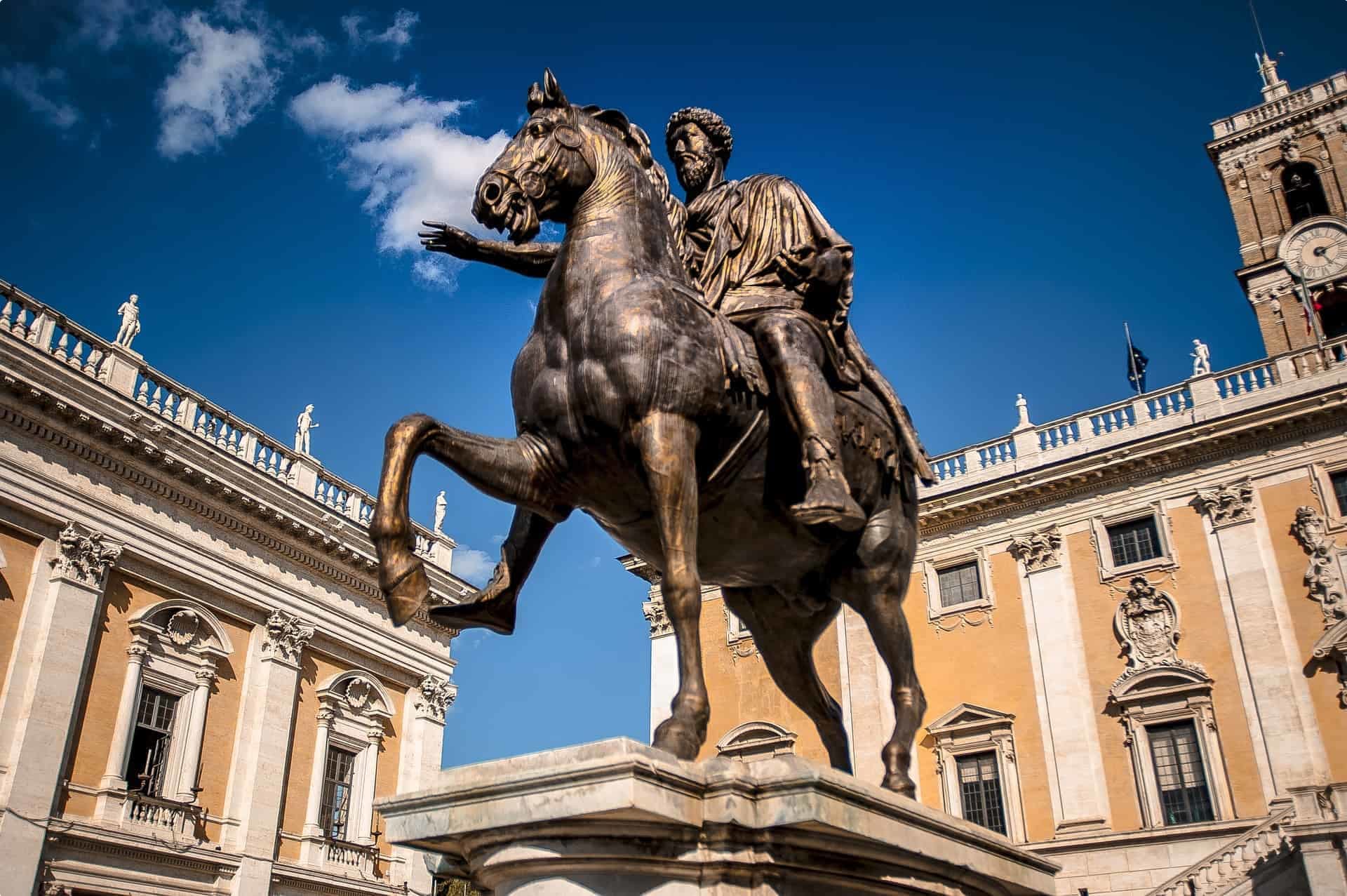
It is the leadership of an Empire or nation that most greatly impacts its history and progress. Despite a bloody start to the Roman Empire, new rulers in the golden era managed to thwart cruel practices and create the foundations of modern democratic society. Leaders with their priorities focused on bettering the majority of the population were able to avoid the paranoia that intensified the tyranny and brutality of previous leaders. Many of today’s European countries based their legal systems on the institutions established by Emperors such as Antonius Pius and Marcus Aurelius and based their welfare policies on the foundations established by Emperor Augustus. Today, looking back at the heart of Ancient Rome and the men at its centre can help us understand the systems, policies and politics we see today.

If you want to learn more about Rome and the ancient Romans, join Odyssey Traveller’s escorted trip to the Eternal City.
Odyssey Traveller’s tours are all designed for the mature or senior traveller, whether travelling alone or with a partner. You may also consider:
- Romans in France – which explores some of the major remains of the Roman occupation between the 1st century BC and the 4th century AD. Roman Gaul occupied an area that includes modern France, Belgium, Luxembourg, and Germany southwest of the Rhine.
- Romans in Britain – explore the world of Roman Britain as we trace the visible remains of the Roman occupation. The Romans occupied Britain for some 400 years and left behind a lasting legacy. Many of their buildings were pulled down and reused but there is still a lot left for us to discover. Join us as we travel in the footsteps of the legions through England and Wales, exploring what remains of their cities, fortresses, villas, bath houses and roads.
Related Tours
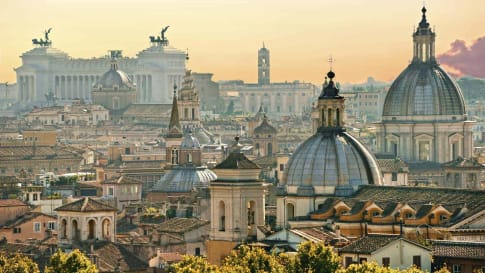
15 days
DecDiscover Rome | Cultural and History Small Group Tour for Seniors
Visiting Italy
Rome is arguably the most fascinating city in Italy, the capital city, once the centre of a vast, ancient empire and still today a cultural focus within Europe. Explore the city in-depth as part of a small group program spending 15 days exploring, just Rome and Roman History.
From A$9,235 AUD
View Tour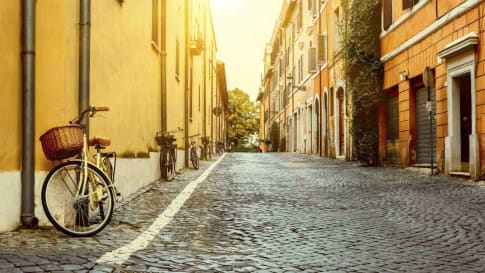
22 days
Sep, Apr, MarHeritage, Culture and History of Italy | Small Group Tours for Seniors
Visiting Italy
Rome, the world’s first superpower, lasted for almost a thousand years. In this small group tour for senior couples and solo travellers we thread our way through the Rome of the Emperors, then through the Italy of the Renaissance, Michelangelo, the Medici, and the Borgia. In the south, we visit the cosmopolitan city of Naples as well as Pompeii and the island retreat of Capri.
From A$13,695 AUD
View Tour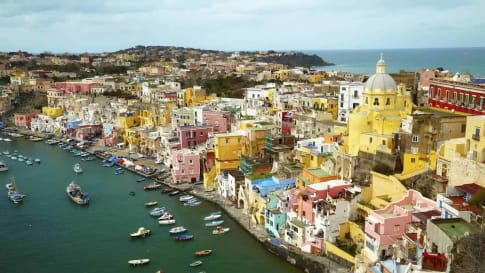
22 days
Jan, Apr, SepAncient History of Southern Italy & Sicily group tours
Visiting Italy
Our program for senior travellers, as well as featuring the rugged countryside of Southern Italy, also encompasses learning about the many civilisations that have shaped this land. We learn about the influence of the early Phoenicians, Greeks, Romans, Byzantines, Saracens, and Aragonese.
From A$16,995 AUD
View Tour

